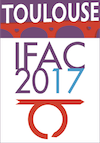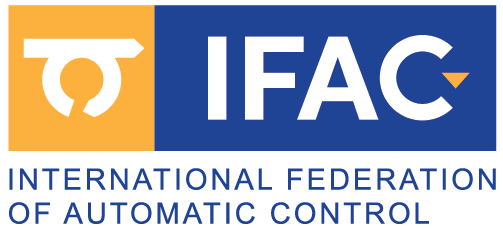IFAC 2017 World Congress features 5 plenary and 6 semi-plenary lectures. Abstracts and biographies of the authors are provided below.
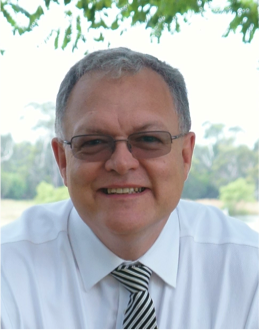 |
Iven MareelsSystems Engineering for Water Networks |
Monday 10 July |
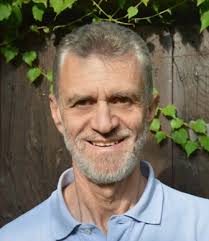 |
A Tribute in Memory of Roberto Tempo |
Monday 10 July |
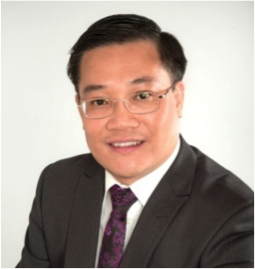 |
Qing-Chang ZhongSynchronized and Democratized Smart Grids |
Monday 10 July |
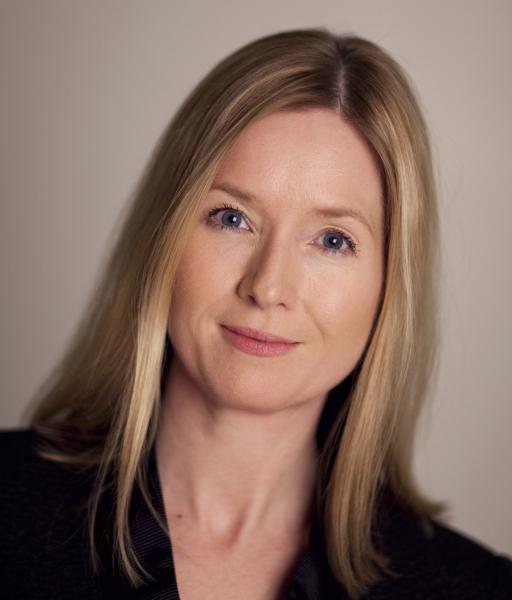 |
Kristin Y. PettersenSnake Robots: from Biology, through University, towards Industry |
Tuesday 11 July |
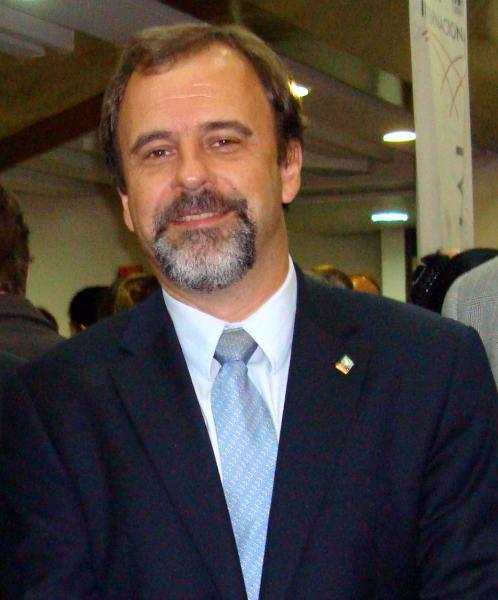 |
Carlos Eduardo PereiraCo-authors: Shimon Nof and Gérard Morel Historical Survey and Emerging Challenges of Manufacturing Automation Modeling and Control – A Global Perspective |
Tuesday 11 July |
 |
Jean-Michel CoronSome key steps in the history of feedback control |
Tuesday 11 July |
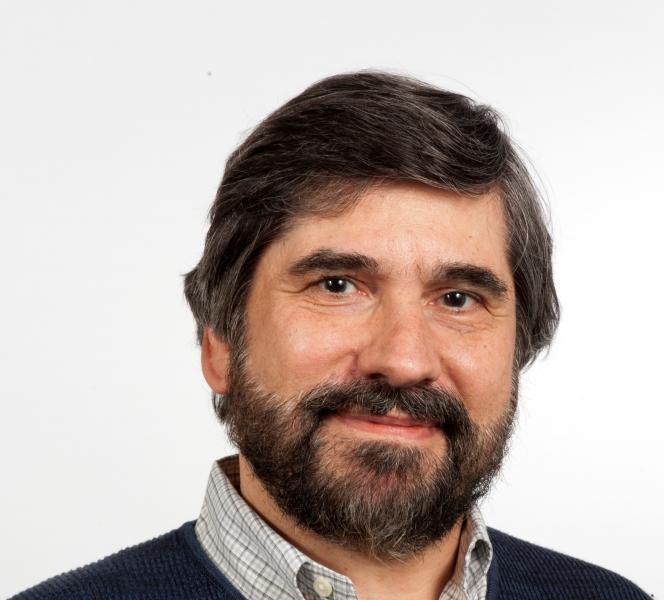 |
Christos CassandrasAutonomous Mobility in Smart Cities |
Wednesday 12 July |
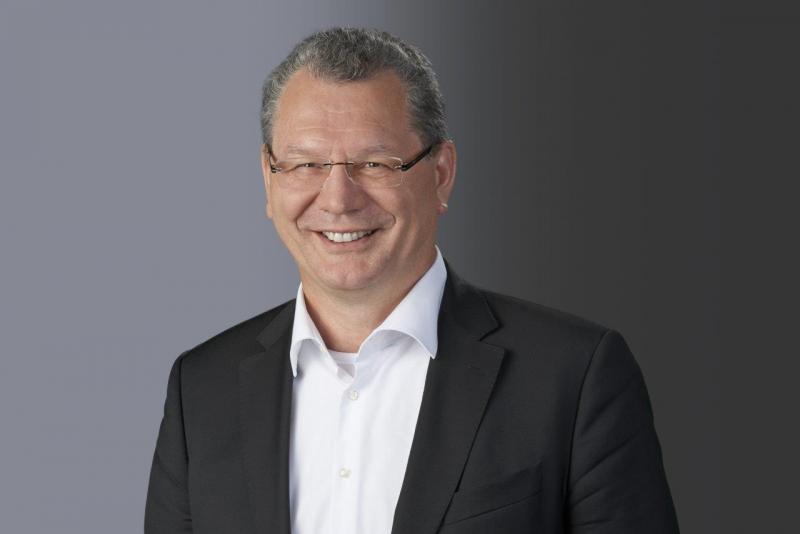 |
Frank FörsterlingElectronic Horizon: Cloud based solution for automated driving. |
Wednesday 12 July |
 |
Jong-Hwan KimTask Intelligence of Robots |
Wednesday 12 July |
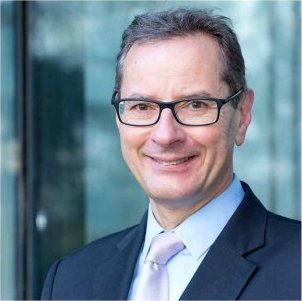  |
Charles Champion and Grazia VittadiniPioneering the future aerospace |
Thursday 13 July |
 |
Dawn TilburyHybrid processes for controlling cyber-physical manufacturing systems |
Friday 14 July |
Iven Mareels
Systems Engineering for Water Networks
Monday 10 July, 8:30-9:30, Palais des Sports Arena
Abstract: Planet earth is endowed with plenty of water, but as all the World Water Reports make abundantly clear, that water is often poorly managed just because of its accepted abundance. The World Bank’s 2030 Water Resources Group, in its inaugural report goes as far as stating that “we are managing our way to water scarcity”. It predicts that by 2030 a significant and increasing portion of the world population will struggle with water shortages over extended periods of time in almost every year. This is further underscored by the observation that the majority of the main river basins already suffer from “over” exploitation. Climate change, population growth and an increasingly middle class life style are the main drivers putting pressure on water use.
In this presentation, we describe a systems engineering approach for water management, and articulate a number of value propositions for significant investments in improved water management and control as well as automation. The main value propositions are derived from an economic productivity point of view and/or a social licence to use water as well as providing economically quantified options. Although, as the European Committee on Climate Change has pointed out in early 2017, water access under climate change should also provide a significant incentive for much needed investment.
Throughout the talk, the emphasis will be on the automation systems we developed for irrigation, in a collaboration between the University of Melbourne and industry partner Rubicon Water Pty Ltd. Irrigation is responsible for 70% of the world’s fresh water extraction. Food security, and food production are key, both in terms of the need to supply more food and plant products as well as supporting the shift to higher water intensity food.
From models for controlled channels, to controlling water levels and water flows and improving on farm water productivity, as well as dealing with emergencies, the talk will illustrate the information loops from water and plant behaviour outputs to environmental water extraction inputs. The competition of urban, rural, industrial and environmental water users as enabled by an economic water market will be illustrated. The water market builds on water accounting that is integral to the systems engineering approach.
Most of the data and systems examples will come from our Australian experience. Australia serves as a great model for many world regions, as its natural history of floods and droughts, and its climate change experience underscore.
Some open problems in terms of extending the systems engineering approach to support management over larger temporal and spatial scales, including all water sources, are illustrated.
Biography: Iven Mareels is Dean of the School of Engineering, the University of Melbourne and a Redmond Barry Distinguished Professor holding the Chair of Electrical and Electronic Engineering.
He obtained the (ir) Masters of Electromechanical Engineering from Gent University Belgium in 1982 and the PhD in Systems Engineering from the Australian National University in 1987. He became Professor of Electrical Engineering at the University of Melbourne in 1996. He is an Honorary Professor at the National University of Defence Technology, China; and Shanghai Jiao Tong University, China.
He received two civil honours for his work in engineering education and research:
- 2013 Commander in the Order of the Crown (Belgium),
- 2003 Centenary Medal (Australia).
His contributions to research as well as education are recognised by inter alia:
- 2015-17 IEEE CSS Distinguished Lecturer,
- 2014 IEEE CSS Control Technology Award, for the control of water networks,
- 2013 The Asian Control Association Wook Hyun Kwon Education Award,
- 2008 Clunies Ross Medal, Academy of Technological Sciences and Engineering for the management and automation of water networks,
- 2007 Inaugural Vice-Chancellor’s Knowledge Transfer Excellence Award from the University of Melbourne, for collaboration with Rubicon Water on water networks
- 2005-06 IEEE CSS Distinguished Lecturer, and,
- 1994 The Vice-Chancellor's Award for Excellence in Teaching from the Australian National University.
He is a Fellow of The Academy of Technological Sciences and Engineering (ATSE) Australia; The Institute of Electrical and Electronics Engineers (USA), the International Federation of Automatic Control and Engineers Australia. He is a Foreign Member of the Royal Flemish Academy of Belgium for Science and the Arts. He is registered as a Corporate Professional Engineer with Engineers Australia.
Iven serves on a number of Boards for industry, academe and in service to the profession. He has extensive experience in consulting for both industry and government. Iven is an Advisor to the International Federation of Automatic Control and served 6 years as its Chair of the Technical Board.
He maintains strong interests in education and has taught a broad range of subjects in both mechanical and electrical engineering curricula.
His research is about the modelling, control and organisation of large scale systems, both engineered as well as natural systems. He has published extensively (5 books, 17 book chapters, more than 140 journal publications and 250 conference publications). He is a co-inventor on a suite of 31 international patents, 30 of which relate to the management and control of open channels used for bulk water transport.
A Tribute in Memory of Roberto Tempo
Monday 10 July, 18:15-19:10, Saint Exupéry Auditorium
Biography: Roberto Tempo was born in Cuorgne', Italy, in 1956. In 1980 he graduated in Electrical Engineering from Politecnico di Torino, Italy. After a period spent at Politecnico di Torino, he joined the National Research Council of Italy (CNR) at the research institute IEIIT, Torino, where he was a Director of Research of Systems and Computer Engineering since 1991. He has held visiting and research positions at Tsinghua University and Chinese Academy of Sciences in Beijing, Kyoto University, The University of Tokyo, University of Illinois at Urbana-Champaign, German Aerospace Research Organization in Oberpfaffenhofen and Columbia University in New York.
Dr. Tempo's research activities were mainly focused on the analysis and design of complex networked systems subject to uncertainty, and various related applications within information technology which currently include the PageRank computation in the Google search engine, distributed localization of wireless sensor networks and opinion dynamics in social networks. On these topics, he has published more than 200 research papers in international journals, books and conferences, including a recent paper on belief systems published in Science. He is also a co-author of the book “Randomized Algorithms for Analysis and Control of Uncertain Systems,” Springer-Verlag, London, published in two editions in 2005 and 2013.
Dr. Tempo was a Fellow of the IEEE for “Contributions to Robust Identification and Control of Uncertain Systems” and a Fellow of the International Federation of Automatic Control (IFAC) for “Contributions to the Analysis and Control of Uncertain Systems, for Pioneering the Probabilistic Approach to Robustness.” He is a recipient of the "IEEE Control Systems Magazine Outstanding Paper Award", of the "Automatica Outstanding Paper Prize Award", and of the “Distinguished Member Award” from the IEEE Control Systems Society. He was a Corresponding Member of the Academy of Sciences, Institute of Bologna, Italy, Class Engineering Sciences.
In 2010 Dr. Tempo was President of the IEEE Control Systems Society. He served as Editor-in-Chief of Automatica. He has been a Senior Editor of the IEEE Transactions on Automatic Control in 2011-2014 and Editor for Technical Notes and Correspondence of the same journal in 2005-2009. He was a member of the Advisory Board of Systems & Control: Foundations & Applications, Birkhauser. He was General Co-Chair for the IEEE Conference on Decision and Control, Florence, Italy, 2013 and Program Chair of the first joint IEEE Conference on Decision and Control and European Control Conference, Seville, Spain, 2005.
Roberto Tempo passed away on Saturday 14 January 2017.
Program:
- Tribute to Roberto Tempo, by Tamer Başar, University of Illinois at Urbana-Champaign, IL, USA and Alberto Isidori, University of Rome, Rome, Italy
- Robust Stabilization and Control, by B. Ross Barmish, University of Wisconsin, Madison, WI, USA
- Randomized Algorithms for Analysis and Control of Uncertain Systems, by Fabrizio Dabbene, Institute CNR IEIIT, Torino, Italy
- PageRank Computation, by Hideaki Ishii, Tokyo Institute of Technology, Tokyo, Japan
- Social Networks and Opinion Dynamics, by Anton V. Proskurnikov, Delft University of Technology, Delft, Netherlands
Qing-Chang Zhong
Synchronized and Democratized Smart Grids
Monday 10 July, 18:15-19:00, Palais des Sports Arena
Abstract: Power systems are going through a paradigm change. The centralized large facilities are being replaced with millions of widely dispersed, incompatible, relatively small renewable or alternative power plants, plug-in EVs, and energy storage units. Moreover, the majority of loads are expected to actively take part in the grid regulation in the same way as suppliers do. This paradigm change, called the democratization of power systems, is comparable to the great historical event of personal computers replacing mainframes in the technology domain or republics replacing monarchies in the political domain. In this lecture, it will be shown that the fundamental challenge behind this paradigm change is that future power systems will be power-electronics-based, instead of electric machines-based, with millions of heterogeneous active players. Advanced control algorithms will then be proposed to homogenize these heterogeneous players, thus achieving legal equality for all the players. Moreover, a distributed system architecture will be presented to govern the operation of future power systems based on the synchronization mechanism of synchronous machines, which has underpinned power systems for over 100 years. Hence, the most important features of a democratized society, i.e., the legal equality and the rule of law, are established for power systems, turning future power systems into synchronized and democratized smart grids. As a result, all active players in the grid, large or small, conventional or renewable, supplying or consuming, will be controlled to behave like (virtual) synchronous machines so that they can play the same equal role in regulating the grid. Moreover, they will all follow the same rule of law --- the synchronization mechanism of synchronous machines --- to interact with each other, enhancing the stability, scalability, operability, reliability, security and resiliency of future power systems.
Biography: Dr. Qing-Chang Zhong, a Fellow of IEEE and IET, currently holds the Max McGraw Endowed Chair Professor in Energy and Power Engineering at Illinois Institute of Technology, Chicago, USA. He obtained two PhD degrees from Imperial College London, UK, in 2004 (awarded the Best Doctoral Thesis Prize) and Shanghai Jiao Tong University, China, in 2000, respectively. He serves as a Vice Chair for IFAC TC 6.3 (Power and Energy Systems) and IFAC TC 2.2 (Linear Control Systems). He is a Distinguished Lecturer of the IEEE Control Systems Society, the IEEE Power Electronics Society and the IEEE Power and Energy Society. Before joining Illinois Institute of Technology, he was the Chair Professor in Control and Systems Engineering at The University of Sheffield, UK, where he built up a $5M+ research lab dedicated to the control of energy and power systems, which received strong support from government agencies and industry, including Rolls-Royce, National Grid, National Instruments, Texas Instruments, Siemens, ALSTOM, Yokogawa, and OPAL RT. He (co-)authored three research monographs, including Robust Control of Time-delay Systems (Springer, 2006) and Control of Power Inverters in Renewable Energy and Smart Grid Integration (Wiley-IEEE Press, 2013). His fourth book entitled Power Electronics-enabled Autonomous Power Systems: NextGeneration Smart Grids will be published by Wiley-IEEE in 2017. His research focuses on control theory, power electronics and the seamless integration of both to address fundamental challenges in energy and power systems. He is an Associate Editor of leading journals in control and power engineering, including IEEE Trans. on Automatic Control, IEEE Trans. on Control Systems Technology, IEEE Trans. on Industrial Electronics and IEEE Trans. on Power Electronics.
Kristin Y. Pettersen
 Snake Robots: from Biology, through University, towards Industry
Snake Robots: from Biology, through University, towards Industry
Tuesday 11 July, 8:30-9:30, Palais des Sports Arena
Abstract: Snake robots are motivated by the long, slender and flexible body of biological snakes, which allows them to move in virtually any environment on land and in water. Since the snake robot is essentially a manipulator arm that can move by itself, it has a number of interesting applications including firefighting applications and search and rescue operations. In water, the robot is a highly flexible and dexterous manipulator arm that can swim by itself like an eel. This highly flexible snake-like mechanism has excellent accessibility properties; it can for instance access virtually any location on a subsea oil & gas installation, move into the confined areas of ship wrecks, or be used for observation of biological systems. Furthermore, not only can the swimming manipulator access narrow openings and confined areas, but it can also carry out highly complex manipulation tasks at this location since manipulation is an inherent capability of the system. By incorporating the propulsion system and the manipulation capabilities in the same mechanical structure, this vehicle becomes highly compact and is able to bring inspection and intervention capabilities to subsea locations where ROVs today cannot operate. In the longer term, this may enable reduced size and cost of subsea production systems.
In this talk, I will present the inspiration from biological snakes, and recent research results on modelling and control of snake robots, including both theoretical and experimental results. Finally, I will present the ongoing efforts for bringing the results from university towards a cost-efficient solution for the oil and gas industry. Extended Abstract in PDF
Biography: Kristin Y. Pettersen is a Professor in the Department of Engineering Cybernetics, NTNU where she has been a faculty member since 1996. She was Head of Department 2011-2013, Vice-Head of Department 2009-2011, and Director of the NTNU ICT Programme of Robotics 2010-2013. In the period 2013 – 2022 she is also Key Scientist at the CoE Centre for Autonomous Marine Operations and Systems (AMOS). She is co-founder of the NTNU spin-off company Eelume AS, for which she was CEO 2015-2016.
She received the MSc and PhD degrees in Engineering Cybernetics at NTNU, Trondheim, Norway, in 1992 and 1996, respectively. She has published more than 200 international papers for conferences and journals, and her research interests focus on nonlinear control of mechanical systems with applications to robotics, with a special emphasis on marine robotics and snake robotics. She has served as a member of the Editorial Board of Simulation Modeling Practice and Theory, IEEE Transactions on Control Systems Technology and IEEE Control Systems Magazine. She was a member of the Board of Governors of IEEE Control Systems Society 2012 - 2014, and she has also held several board positions in industrial and research companies. She is an IEEE Fellow.
Carlos Eduardo Pereira
Historical Survey and Emerging Challenges of Manufacturing Automation Modeling and Control – A Global Perspective
Tuesday 11 July, 18:15-19:00, Saint Exupéry Auditorium
Co-authors: Shimon Nof and Gérard Morel
Abstract: Manufacturing and logistics are fundamental to civilization progress since ancient times. They have been and still serve as important engines of economic, social, cultural and environmental health and sustainability, both locally and globally. Automatic control of manufacturing and logistics has also played a valuable role in this progress. A major dual challenge in manufacturing and logistics systems has always been the need to address simultaneously the multidisciplinary systemic control of technical, human, and natural variables, and overcoming conflicts and emergencies to control safety, resilience and sustainability responsibilities. The purpose of this presentation is to survey historically and with global perspective, with illustrations and case-studies the key developments in the automatic control of manufacturing and logistics, and the emerging challenges.
Overall, as in many areas, automatic control of manufacturing and logistics has evolved with the developments of human scientific knowledge and education, social organization, and computing and communication advances. In general, the purpose of the automatic control has always been to support the well-being of humans and societies. Past challenges included separation and imprecision of machines and processes, due to reliance on simpler machines, instruments and sensors, and little or no feedback; lack of flexibility, networking, and integration; and reliance mostly on manual supervision of machines and factories.
Over the years, improvements enabled better interoperability, connectivity, collaboration, flexibility and precision: Better human-machine and machine-machine interaction, interfacing, computer-based integration; more precise sensors and measurement devices; adaptive and predictive control models of higher complexity and accuracy; faster and wireless communication and effective networking that have enabled automated factories, robotics and transfer lines, regional and global supply chains and enterprises; and progress toward better, lower cost, environmentally sensitive and more resilient automation through internetworking, cloud manufacturing, Industrial Internet-of Things, and Cyber-Physical Systems of Systems.
Significantly better precision in processing and sensors, and in computing and internetworking speed, have brought progress as well as challenges also in micro- and nano-manufacturing, virtual and additive manufacturing, and in precision of global logistics. The major dual challenge specific to complex manufacturing and logistics systems includes cutting edge obstacles in emerging machine-machine collaboration and collaborative robots; innovative design and materials; machine learning and smart factories; interoperability languages and standards; distributed multi-agent control and holonic control; and better collaborative control for error and conflict prevention in increasingly complex systems, infrastructure, smart grids, and global networks. They offer the next generation of our automatic control community interesting theoretical and socially significant frontiers.
Biography: Carlos Eduardo Pereira is a Full Professor at Federal University of Rio Grande do Sul (UFRGS) in Porto Alegre, southern Brazil, where he chairs the Control, Automatic, and Robotics Group, a research group that includes 7 faculty members and more than 40 graduate students. He received the Dr.-Ing. degree in Electrical Engineering from the University of Stuttgart, Germany in 1995 and has a MSc in Computer Science and and a B.S. degree in Electrical Engineering both from the Federal University of Rio Grande do Sul (UFRGS) in Brazil. Since November 2015 he also acts as Director of Operations at EMBRAPII - Brazilian Agency for Industrial Research and Innovation.
From 2000 to 2001 he was a visiting researcher at the United Technologies Research Center (UTRC) in Hartford/CT USA, where he was involved in the development of applied research projects for UT companies such Otis, Carrier, Pratt and Whitney, Sikorsky and UT Fuel Cells.
Prof. Pereira has held several IFAC leadership positions, such as Chair/Vice-Chair of IFAC Technical Committees (Manufacturing Plant Control, Telematics Applications). Since 2008 he is an IFAC Council Member and has received an IFAC Service Award in 2011.
He has supervised around 100 PhD and Master thesis and several of his former students are currently holding important positions both in academia as well as in innovative companies (Petrobras, Embraer, FIAT, Daimler-Benz Research, Lawrence Berkeley National Lab, Siemens, etc.). Additionally, some of spin-off companies from his group are the companies PONFAC, FALKER, Fueltech, Gyrum etc.
His research focuses on methodologies and tool support for the development of distributed real-time embedded systems, with special emphasis on automation applications and the use of distributed objects over industrial communication protocols. He has also worked on several research projects in collaboration with industry, mostly dealing with the development of real-time computer-based systems and applying the concepts developed on his scientific research.
Carlos E. Pereira is a researcher level 1 of the Brazilian Research Agency CNPq. He has more than 400 technical publications on conferences and journals, has acted as member of International Program Committees for several conferences in the field of industrial automation, manufacturing, industrial protocols, and real-time distributed object computing and was General Chairs of several IFAC workshops and conferences held in Brazil. He acts as Associate Editor of the Journal "Control Engineering Practice" and ¨Annual Reviews in Control¨ and has also been recently nominated to act as Deputy Editor of the IFAC Journal of Systems in Control (all these journals published by Elsevier).
He received some important awards related to his research: in 2012 he received the Friedrich Wilhelm Bessel research award from the Alexander von Humboldt Foundation, in 2010 he won the "Premio Santander Universidades", being the first place in the area "Tecnologias da Informação, da Comunicacão e da Educação". Research projects under his supervision also got award on contests such as Whirpool Innovation Context - Brazil, 2010 and Brazilian Engineering Award sponsored by Petrobras - the major Brazilian oil industry.
Jean-Michel Coron
Some key steps in the history of feedback control
Tuesday 11 July, 18:15-19:00, Palais des Sports Arena
Abstract: Feedback control allows a system to remain close to an equilibrium. There are very common in nature, as, for example, the temperature regulation of the human body by neural feedback mechanisms. One of the earliest feedback device created by the human is Ctesibios float regulator used in water clocks. The industrial revolution is a golden age for the construction of mechanical feedback controllers. They include float regulators, pressure regulators and centrifugal governors. These feedback controllers are motivated by practical issues and rely mainly on trial and error together with great engineering skills and intuitions. Some of these regulators (Buss, Farcot, Foucault, Galloway, Hick, Jenkin, Mead, Molinié, Porter, Périer brothers, Thiollier, Villarceau, Watt…) will be shortly presented. One of the holy grails during that period was the construction of isochronous regulators. The mathematical studies of regulators started in the nineteen century with the pioneer works by Airy (1840), Maxwell (1868) and Wischnegradski (1876). N. Minorsky introduced in 1922 a controller with the “three terms” (Proportional-Integral-Derivative) for the steering of ships. Feedback control then develops as part of “modern control” with an increasing use of computers and mathematics. This evolution includes the pole-shifting theorem, the linear quadratic regulator and various design tools to handle nonlinearities.
Biography: Jean-Michel Coron received the engineering degree from École polytechnique, Paris, France, in 1978 and from the Corps des Mines in 1981. He received the Thèse d’État in 1982. He has been a researcher at Mines ParisTech, then an associate professor at École polytechnique, and a full professor at Université Paris-Sud (Paris 11). He is currently a full professor at Université Pierre et Marie Curie (Paris 6) and a member of the French Academy of sciences.
Coron’s research in control theory is on the stabilization of nonlinear control systems and the control of systems modeled by means of partial differential equations (Euler and Navier-Stokes equations of incompressible fluids, shallow water equations, Schrödinger equations, Korteweg-de Vries equations). He supervised 20 theses.
Coron was selected to deliver a plenary lecture in control theory at ICIAM congress 2015 and at ICM 2010. He received many prizes, including the W. T. and Idalia Reid Prize (2017), the Tartufari prize (2016), the Maxwell prize (2015) and the Fermat prize (1993). He was the recipient of an ERC advanced grant (2011-2016).
Christos Cassandras
 Autonomous Mobility in Smart Cities
Autonomous Mobility in Smart Cities
Wednesday 12 July, 8:30-9:30, Palais des Sports Arena
Abstract: Smart Cities are an example of Cyber-Physical Systems whose goals include improvements in transportation, energy distribution, emergency response, and infrastructure maintenance, to name a few. When it comes to mobility, the availability of large amounts of data, ubiquitous wireless connectivity, and the critical need for scalability open the door for new control and optimization methods with the aim of automating all aspects of mobility, from interconnected self-driving vehicles to sharing transportation resources. The talk will address two key questions: can control and optimization methods enable this automation and, if so, how can we quantify its benefits to justify the challenging technological, economic, and social transitions involved? First, an optimal control framework will be presented to show how Connected Automated Vehicles (CAVs) can operate in a dynamic resource contention environment, primarily urban intersections without any traffic lights. Second, the talk will describe how large amounts of actual traffic data can be harnessed and drive inverse optimization methods to quantify the value of CAVs in terms of eliminating the prevailing Price of Anarchy: the gap between current “selfish” user-centric and optimal “social” system-centric traffic equilibria which are achievable with automated mobility.
Biography: Christos G. Cassandras is Distinguished Professor of Engineering at Boston University. He is Head of the Division of Systems Engineering, Professor of Electrical and Computer Engineering, and co-founder of Boston University’s Center for Information and Systems Engineering (CISE). He also holds a Chair Professorship at Tsinghua University, China. He received degrees from Yale University (B.S., 1977), Stanford University (M.S.E.E., 1978), and Harvard University (S.M., 1979; Ph.D., 1982). In 1982-84 he was with ITP Boston, Inc. where he worked on the design of automated manufacturing systems. In 1984-1996 he was a faculty member at the Department of Electrical and Computer Engineering, University of Massachusetts/Amherst. He specializes in the areas of discrete event and hybrid systems, cooperative control, stochastic optimization, and computer simulation, with applications to computer and sensor networks, manufacturing systems, and transportation systems. He has published over 380 refereed papers in these areas, and six books. He has guest-edited several technical journal issues and serves on several journal Editorial Boards. In addition to his academic activities, he has worked extensively with industrial organizations on various systems integration projects and the development of decision-support software. He has most recently collaborated with The MathWorks, Inc. in the development of the discrete event and hybrid system simulator SimEvents.
Dr. Cassandras was Editor-in-Chief of the IEEE Transactions on Automatic Control from 1998 through 2009 and has also served as Editor for Technical Notes and Correspondence and Associate Editor. He is currently an Editor of Automatica. He was the 2012 President of the IEEE Control Systems Society (CSS). He has also served as Vice President for Publications and on the Board of Governors of the CSS, as well as on several IEEE committees, and has chaired several conferences. He has been a plenary/keynote speaker at numerous international conferences, including the American Control Conference in 2001 and the IEEE Conference on Decision and Control in 2002 and in 2016. He has also been an IEEE Distinguished Lecturer.
He is the recipient of several awards, including the 2011 IEEE Control Systems Technology Award, the Distinguished Member Award of the IEEE Control Systems Society (2006), the 1999 Harold Chestnut Prize (IFAC Best Control Engineering Textbook) for Discrete Event Systems: Modeling and Performance Analysis, a 2011 prize and a 2014 prize for the IBM/IEEE Smarter Planet Challenge competition (for a “Smart Parking” system and for the analytical engine of the Street Bump system respectively), the 2014 Engineering Distinguished Scholar Award at Boston University, several honorary professorships, a 1991 Lilly Fellowship and a 2012 Kern Fellowship. He is a member of Phi Beta Kappa and Tau Beta Pi. He is also a Fellow of the IEEE and a Fellow of the IFAC.
Frank Försterling
Electronic Horizon: Cloud based solution for automated driving.
Wednesday 12 July, 18:15-19:00, Saint Exupéry Auditorium
Abstract: The vehicle of the future will be fully integrated into the "Internet of Everything" world. The connected vehicle becomes safer ("Zero Accident"), cleaner ("Zero Emission") as well as more comfortable. One of the functionalities of the connected vehicle will be automated driving. For the deployment of automated driving functionalities 3 representations of the vehicle have to interact: the vehicle model, the driver model, the environmental model. All models require a dedicated and enhanced set of sensors for sensing the dedicated situations. For the recognition of the environment, a comprehensive set of advanced sensors will be applied, for example: cameras (forward looking, surround view), radar, lidar, etc. The challenge of in-vehicle sensor: a limited field of view - approx. 300 meters. The electronic Horizon - a map based technology - allows to extend the field of view beyond 300 meters. The eHorizon allows to "look" behind the mountain, around the corner etc. Based on these predictive capabilities of the electronic Horizon, the deployment of enhanced vehicle functionalities gets feasible. The electronic Horizon is a cloud based technology for the purpose to provide the "freshest ever" data to the vehicle. The presentation explains the capabilities and the technology of the electronic Horizon.
Biography: Dr. Försterling completed a degree in mathematics at the State University of Kharkov, Ukraine.
After leaving university, he began his professional career as a research fellow of data communications and distributed applications at Academy of Sciences, Germany.
In 1990 Dr. Försterling joined Siemens Communications. For nearly 15 years he held various positions as head of R&D teams, within the areas of Business Development and Technical Sales. His responsibilities mainly addressed topics of public communications like Intelligent Networks, Next Generation IP Networks, Telecommunications Applications as well as Systems Integration.
In January 2005, Dr. Försterling moved to the automotive infotainment division of Siemens VDO, which was acquired by Continental in 2007. Since January 2007 he has lead advanced development and innovations activities within Continental’s Business Unit Infotainment and Connectivity. Since April 2012 Dr. Försterling is in charge of Sales&Portfolio for Innovations within Division Interior of Continental.
Dr. Försterling and his team lead projects focused on next generation automotive technologies like Car-to-X communication, Interconnecting Nomadic devices, Software defined Radio Broadcasting solutions, Web Services, IP based In-Car Systems Architectures, ITS based solutions (ITS – intelligent transportation systems), Automated Driving.
Dr. Försterling is representing Continental within ERTICO – the ITS Europe Organization. He is member of the ERTICO Supervisory Board as well as the ERTICO Strategy Board.
Jong-Hwan Kim
Task Intelligence of Robots
Wednesday 12 July, 18:15-19:00, Palais des Sports Arena
Abstract: Robots have been expected to do smart services as well as various troublesome or arduous tasks for humans. Since these human-scale tasks consist of sequential procedures, the robots need a knowledge structure to store the temporal sequences through active learning and to retrieve them to autonomously perform such tasks in similar situations through reasoning. The capability for performing those tasks is defined as task intelligence that can be realized based on intelligence operating architecture (iOA). As a knowledge structure, a long-term memory can be employed, which consists of episodic memory, semantic memory, procedural memory, and emotional memory.
The crux of the realization of task intelligence for robots is to design the memory module for storing temporal event sequences of tasks, the mechanism of thought for reasoning, and motion planning methodology for execution, among others. This talk introduces how to realize task intelligence based on iOA. This talk focuses on the design of a long-term memory, neural model-based mechanism of thought, and an online motion planning algorithm, Q-RRT*. The long-term memory is developed as an integrated multi-memory neural model in which an episodic memory is designed using a Deep ART (Adaptive Resonance Theory) neural model and a semantic memory is built through the consolidation of memory contents in episodic memory. Procedural memory is also designed using the context-based recurrent neural network to store the trajectories of the manipulators along with context information and then retrieve them according to the context information without conscious thinking. Robots are taught either by human demonstration or symbolic description. A behavior appropriate to the current situation is selected by the developmental neural memory-based mechanism of thought, while a proper task is retrieved from Deep ART model. The behaviors are executed safely and quickly with the motion planning algorithm. The effectiveness of the realization of task intelligence based on IoA in terms of machine intelligence learning and executing tasks is verified through experiments with a humanoid robot, Mybot, developed in the Robot Intelligence Technology Lab. at KAIST. Invited by the World Economic Forum, Mybot had performance demonstrations at the Annual Meeting of the New Champions in Tianjin, China on June 26~28, 2016.
Biography: Jong-Hwan Kim received Ph.D. degree in Electronics Engineering from Seoul National University, Korea, in 1987. Since 1988, he has been with the School of Electrical Engineering at KAIST and is currently Professor. He is Chair of Robotics Program, KAIST and Adjunct Professor of Griffith University, Australia and ChongQing University of Technology, China. Dr. Kim is Director for KoYoung-KAIST AI Joint Research Center and Machine Intelligence Multi-Sponsored Research Platform. He was Director for the Research Center for Robot Intelligence Technology in 2009~2014. His research interests include machine intelligence learning, intelligence technology, and ubiquitous and genetic robotics. Dr. Kim has authored 5 books and 7 edited books, 2 journal special issues and around 400 refereed papers in technical journals and conference proceedings with h-index of 41. He served as an Associate Editor of the IEEE T. on Evolutionary Computation and the IEEE Computational Intelligence Magazine. Dr. Kim is one of the co-founders of the Int’l Conf. on Simulated Evolution and Learning in 1996, FIRA Robot Wold Congress in 2002 and Int’l Conf. on Robot Intelligence Technology and Applications (RiTA) in 2012. He was General Chair for the IEEE Congress on Evolutionary Computation, Korea, 2001, the IEEE Int’l Symposium on Computational Intelligence in Robotics and Automation, Korea, 2009, and RiTA in 2012~2015. He has been on the program committees and advisory boards of more than 100 int’l conferences. Dr. Kim has delivered over 200 invited talks, keynote speeches and tutorials on computational intelligence and robotics in 24 countries. His name was included in the Barons 500 Leaders for the New Century in 2,000 as the Father of Robot Football. He is the Founder of FIRA and IROC. Dr. Kim was the recipient of the science and technology award from the President of Republic of Korea in 1997 and has been elevated to 2009 IEEE Fellow.
Charles Champion and Grazia Vittadini
Pioneering the future aerospace
Thursday 13 July, 8:30-9:30, Palais des Sports Arena
Abstract: Starting in 1974, with airplanes ranging from the A300, to the A380, the A350 XWB, and the A320/A330neos, Airbus delivered its 10,000th aircraft in October 2016. The aviation sector is expanding; passenger demand doubles every 15 years. By 2050, the air transport industry could be handling up to 16 billion passengers and 400 million tons of cargo annually. Passengers have also become increasingly mindful of the ecological impact of their travel choices and are asking for more comfort and connectivity. Flying more safely, more simply, but also fully respecting environmental targets are our growing challenges. In addition, the design of space systems faces increasingly aggressive worldwide competition, with continuously changing and more demanding markets, calling for reliable, efficient, and new control design tools and technologies, compatible with reduced development cycles.
In this context, some future aerospace challenges will include the reduction of the system complexity while maintaining the same high-level safety standards. Efficient systems’ architectures must be designed with this in mind. Distributed architectures are promising, not only at aircraft or satellite level, but as part of a “system of systems”, connecting all aerospace operations’ stakeholders. Digitalisation is also transforming the way our industry operates, creating numerous opportunities to decrease development cycles whilst increasing maturity and level of confidence. And from the customer perspective, predictive maintenance, fault detection, diagnosis and prognostics are key to improving operational reliability and the overall performance of Airbus products.
From the A320 to the last trailblazing modular urban mobility concept and from the first Eurostar/Spot satellites to the new space with mega constellations, discover how the science and innovation of automatic controls and technologies have underscored the company’s ongoing growth transforming a European upstart in the 1970s to a global market leader, contributing to making the world a more connected, safer and smarter place!
Biography: Charles Champion was appointed President of Airbus Operations SAS, effective March 1st 2015 in addition to his position as Executive Vice President Engineering in April 2010.
In his role as Executive Vice President Engineering Champion is responsible for research & technology, overall product architecture and concept development, the design office, integration & flight-testing and continued product airworthiness. Champion is a member of the Airbus Executive Committee. Additionally, Champion was appointed the Chairman of the fully owned subsidiary Airbus India created in 2014.
Champion began his professional career in 1980 with Aérospatiale as an engineer in aerodynamics. He held various positions in the Manufacturing before being in charge of the single-aisle aircraft final assembly lines from 1988 to 1992. During this period, his responsibilities included the development of the A321 final assembly line in Hamburg.
In 1993, Champion was promoted to Director of Airbus Programmes at Aérospatiale's headquarters in Paris. He returned to Toulouse in 1995 as Managing Director of the Future Large Aircraft (FLA) military transport project, now launched as the A400M, starting a new business for Airbus in the military field.
In 1997 Champion joined Airbus Industrie as Vice President Sales for Eastern and Southern Europe and the C.I.S (Commonwealth of Independent States) being in charge of Airbus’ commercial activities for some 25 countries. From 1999 until end 2000, he held the position of Product Executive for Airbus Single Aisle Programme, before being appointed Head of the A380 programme, until the successful certification of the A380 in 2006.
From 2007 to April 2010, Champion was Executive Vice President in charge of Customer Services, responsible for the support of all Airbus aircraft around the world and for the development of services for Airbus customers.
Champion was born in 1955 near Paris, France. He graduated from the Ecole Nationale Supérieure de l'Aéronautique et de l'Espace in Toulouse in 1978, and holds a Master of Science degree from Stanford University. Married, with two children, Mr Champion enjoys running, listening to opera and going to the theatre.
Biography: Grazia Vittadini was appointed Executive Vice President Head of Engineering in January 2017. She is member of the Executive Committee of Airbus Defence and Space. Previously, she served as Senior Vice President Head of Corporate Audit & Forensic, responsible for Airbus Group audit activities worldwide. Prior to this position, Grazia was Vice President Head of Airframe Design and Technical Authority for all Airbus aircraft. Always leading transnational teams in multiple locations, she also served as Chief Engineer on the Wing High Lift Devices of the A380 in Bremen from First Flight to In-Service (2005-2009) and then contributed to securing First Flight and Type Certification of the A350 XWB aircraft as Head of Major Structural Tests in Hamburg. The Major Tests for A320 Extended Service Goal, A380 and A400M were also in her scope. She started her career on the Italian side of the Eurofighter Consortium, before joining Airbus Operations in Germany in 2002 and setting on her path towards senior management positions. Currently, she serves as Director of the Airbus Group Foundation Board and is a member of the Inclusion and Diversity Steering Committee. Grazia graduated from the University Politecnico di Milano in Aeronautical Engineering, and specialized in Aerodynamics (1998).
Dawn Tilbury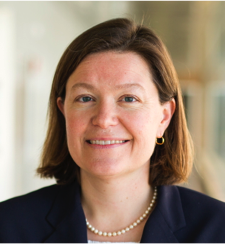
Hybrid processes for controlling cyber-physical manufacturing systems
Friday 14 July, 8:30-9:30, Palais des Sports Arena
Abstract: Revolutionary computing technologies are driving significant advances in the manufacturing domain. High-fidelity simulations and virtual design environments allow unprecedented opportunities to test and validate systems before they are built, reducing overall design time and cost. These simulations can be run in real-time, in parallel to the physical system, to enable better visibility into plant floor operations. Torrents of data streaming from the both simulations and the factory floor can be collected over high-speed networks, and stored in the cloud, enabling improved analytics, predictions, and performance. This talk will describe how the integration of simulation and plant-floor data can enable new control approaches that are able to optimize the overall performance of manufacturing system operations. Collaborations with industry will be highlighted.
Biography: Dawn M. Tilbury received the B.S. degree in Electrical Engineering, summa cum laude, from the University of Minnesota in 1989, and the M.S. and Ph.D. degrees in Electrical Engineering and Computer Sciences from the University of California, Berkeley, in 1992 and 1994, respectively. In 1995, she joined the Mechanical Engineering Department at the University of Michigan, Ann Arbor, where she is currently Professor, with a joint appointment as Professor of EECS. Her research interests include distributed control of mechanical systems with network communication, logic control of manufacturing systems, reliability of ground robotics, and dynamic systems modeling of physiological systems. She was elected Fellow of the IEEE in 2008 and Fellow of the ASME in 2012, and is a Life Member of SWE. She is the Chair of the IFAC Policy Committee (2014-17).
